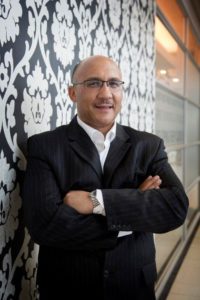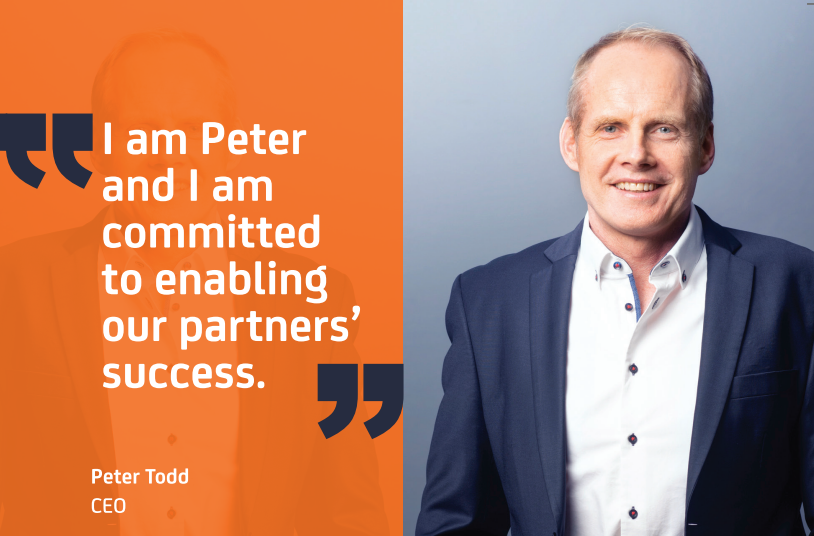John October, Operations Director at Admin Plus, a Constantia UMA, shares how they develop unique products for brokers.
Tony: What I found interesting when researching your business is that your model almost creates products for brokers on demand. Please explain to us how that works?

John: What we did, when we started off back in 2012, was to really look at what the customers’ needs are and a big part of that was a focus on mobile device insurance. So, what we have developed is really a unique ecosystem around how we partner with brokers and insurers in providing either the insurer customer base or mobile operator with administration services.
We partner with the insurer and the mobile operator to provide a unique focus on mobile device insurance to their customer base. We have also positioned ourselves in terms of providing an easy claims process, selecting your cover, and using technology to underwrite the offering that we have. The focus is really our deep capability and experience around mobile device insurance.
Tony: Mobile electronic devices face various risk, from damage to loss. They are extremely popular with criminals because they can sell easily. What are the specific challenges when it comes to underwriting mobile electronic devices?
John: It presents unique challenges when it comes to the underwriting of mobile devices. In our view, what we believe has been underestimated by many insurers where it is part of a comprehensive insurance short-term insurance policy, is the value. You can now get a cell phone valued at up to R35,000. Secondly, for mobile devices, the speed and agility of the claim. If anything happens, you want the turnaround to be within 24 hours.
What we have also learned from that, is that there is a need for smarter underwriting in terms of whether your device is office bound or whether they are mobile, specifically when it comes to laptops and iPads.
What we have seen is that you have new kinds of risks in terms of what you get now during COVID. These devices are important communication and job seeking tools for some of our partners. You must make sure that, in terms of those underwriting approaches, you understand the customer and what the customer is using it for. Then, looking at the customer from a business or SME perspective versus you and me as private individuals, we have quite different uses.
In terms of dealing with those challenges, firstly, we have a unique underwriting approach and model that we use and secondly, it is our ability to look at it, not just as a device, but to look at it beyond the actual value of the asset. In our experience, you must look at it in a much broader way than it just being a cell phone or iPad. You must look at what it is used for, is it for business use, which is quite different than private.
We have also looked at the whole question around the replacement, as you could imagine if you have a cell phone that was bought three years ago, the value is quite different from the value now. The value of the iPhone 11 to that of the iPhone 13 are quite different. So, what we have done, is that we have built a simple ecosystem where we offer support using technology for underwriting, and then we also have a world class call centre, based in Cape Town, to help the customers.

Committed to enabling our partners’ success.
Through authentic relationships, we are committed to enabling our partners success by co-creating solutions and unlocking shared
value. Always with a personal touch.
Chat to me about how we can help you grow your business
sustainably.
Licensed Insurers and authorised FSPs.
Tony: How do you check or verify claims because there is obviously a risk of fraud?
John: You are right. On the one hand, if it is stolen, then there is a certain procedure that we follow, get the EMI numbers, get the police reports, there is a standard process.
What we have realised increasingly, looking at replacement vs repairs, it is quite different. With the increase in value of these phones, what we have seen is that in some cases it is more cost effective to look at repairing rather than replacing. We also now have the technology to assess the phone remotely in terms of what the damage is, and then based on that, help the client decide on whether we replace the phone or send it for repair. We have partnerships with various repairers on a national basis that will repair the phone.
In terms of fraud, what we have seen is that there are certain trends, when you have a new model introduced, whether it is a Samsung or an apple, you will have an increased spike in claims. Therefore, you must look at what the trends are in terms of various new models that are being introduced.
In terms of the claim process and the cost for the insurer, you must look at how you can reduce the processing costs. So, what we have put in place is the capability to, on the one hand, have a straightforward and clear process around claims processing. When you have replacements, the clients want that delivery within 24 hours, whether it is for personal use or for business use. When it comes to an assessment of whether the phone is damaged, we use software technology to do that.
Then regarding replacement, we have a particular process where you must get the police report online, giving the assessor the opportunity to make an informed assessment of the claim.
There is however a high incident rate of people trying to submit claims where you must really put the effort in terms of the validation and the assessment of the claim. By using data analysis and analytics, we have gotten to a point where we can identify variances in the claims submitted.
Tony: Lastly, it is interesting that your products are underwritten by various insurers, which is quite unique on the UMA side. How do you manage that and how does that work?
John: We believe our business model is the Intel Inside concept. So, what we would do is to deliver a bespoke insurance offering based on the partner’s needs and their customer base.
What we found important here is that, when we partner with an external partner, we must define the partner’s growth objective. Whether it is the growth of their current portfolio, or if they are starting a new portfolio on device insurance.
What we have seen is that it is very much dependent on the partner’s objective. If they want to mine the current base, it is a quite different approach to them going online, doing social media, advertising, generating leads, etc.
In terms of the different partners, we would, depending on their model, look at insurance providers, because it depends on their risk appetite.
In this space, we have seen significant growth because there is significant growth in smart devices. Most of our partnerships are around standalone mobile insurance, which we have seen is part of a growing microinsurance offering

